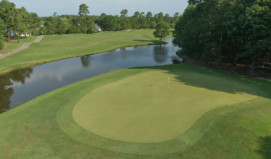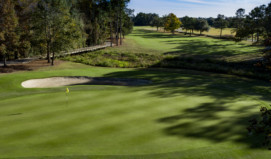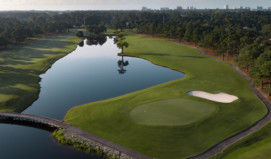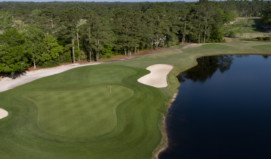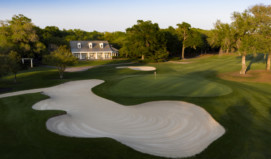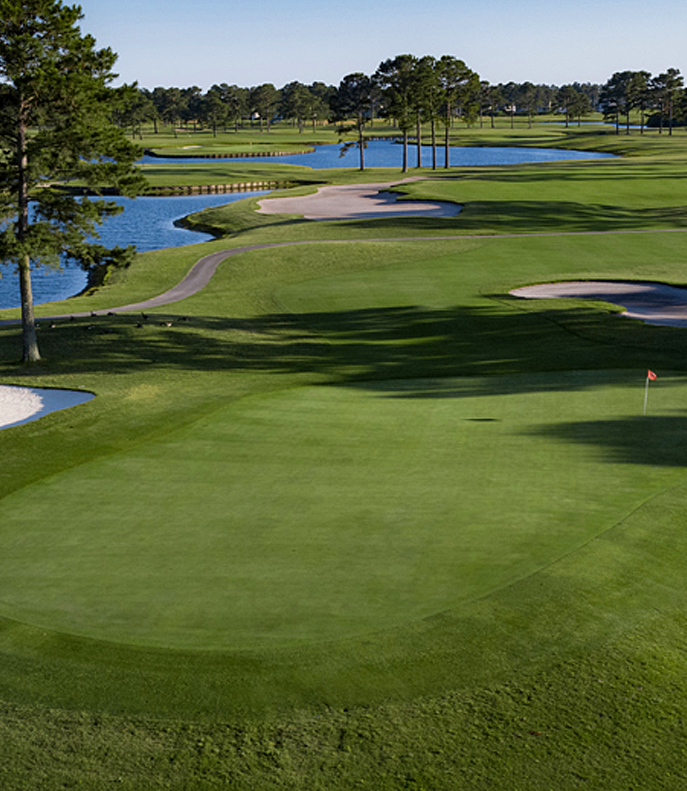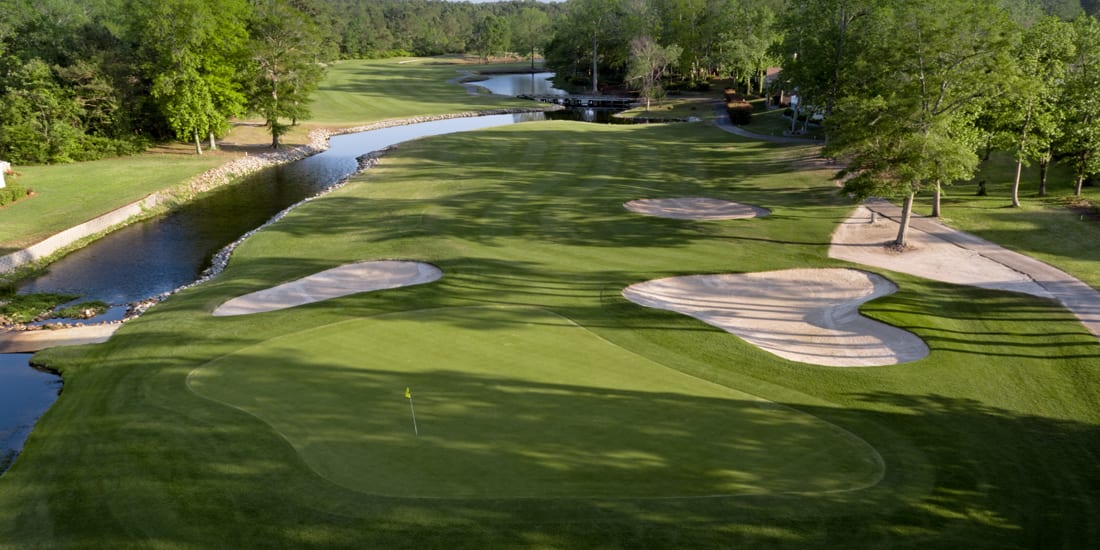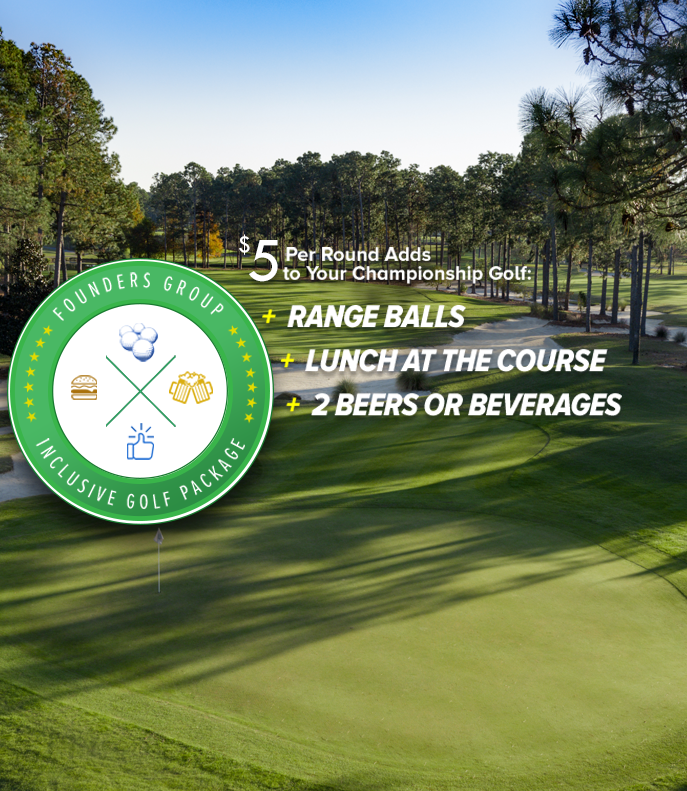It doesn’t matter if you’re a leafer who normally heads north for the fall or someone looking for something categorically different to photograph. Myrtle Beach’s golf scene provides a bevy of seasonal visuals late in the year. Frequently, they are lost in the conversational shuffle – between an extended golf calendar, a large number of playing options and the 50-plus miles of beaches between the North Carolina border and the southernmost golf courses, it’s understandable. Just the same, South Carolina’s Grand Strand lays out the welcome mat for photographers and landscape junkies who happen to be playing the game.
The following five golf courses give players searching for that camera-ready layout during the fall golf season even more reason to book the tee time.
RIVER HILLS GOLF & COUNTRY CLUB
Every single one of the 18 holes at River Hills (pictured above) is bolstered on at least one side by steady tree lines. And although the rolling terrain moves players’ eyes back toward center – and takes the focus off all that green edging – the range of success here was lightened some by an early 2000s renovation project that cleared some of the excess from the picture. Still, the Little River course pushes the limits with several doglegs around those tree lines, as well as 13 water-laden holes.
ARROWHEAD COUNTRY CLUB
You don’t even need to play a round at Arrowhead to see exactly why it fits into this category. A quick trip to the web site shows just how tree-laden the Tom Jackson and Raymond Floyd project can be. The 27 holes (split between the Cypress, Waterway and Lakes nines) squeeze players off the tees throughout. But while all that is happening, the mature tree lines are also providing views galore. What’s more, several of them are accentuated by the background of Intracoastal Waterway.
BAREFOOT RESORT & GOLF, NORMAN COURSE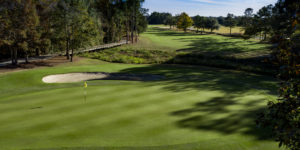
When it comes to Greg Norman’s design at Barefoot,(pictured right) the natural vegetation – plenty of trees and grass combined with loads of sand and water – means a convergence of colors surrounding the player-friendly layout. Every inch of the course is seemingly set up to glorify its already stellar visuals. Much of it can be attributed to distances; the course plays as long as 7,035 yards. However, fresh bump-and-run zones are prevalent year-round. Those shave some the difficulty off the course. Concurrently, they make for photogenic shots right up toward the green.
MYRTLEWOOD GOLF CLUB, PALMETTO COURSE
Make no mistake when it comes to either of the two Myrtlewood courses – pine trees dwarf the others. Most parts of the country have rarely seen the likes of the Palmetto Course’s fall needle drop in the midst of a round. The brown underlie actually saves errant shots and allows for a safer feel and propels the remaining green to the forefront. Along the way, they make sure the actual hazards and oversized greens stand out that much more.
WILLBROOK PLANTATION
Formerly two separate plantations, Willbrook set itself apart with a number of high-profile historical markers dating the property’s days gone by. Some of the centuries-old live oaks, hanging moss and the vegetation tied to the nearby Waccamaw River gave Willbrook the distinction as an environmental staging point. Wildlife run rampant, and they’ve become more than just a little accustomed to the carts cruising by on a regular basis. Essentially, it’s the perfect recipe for a scene-ready course.

